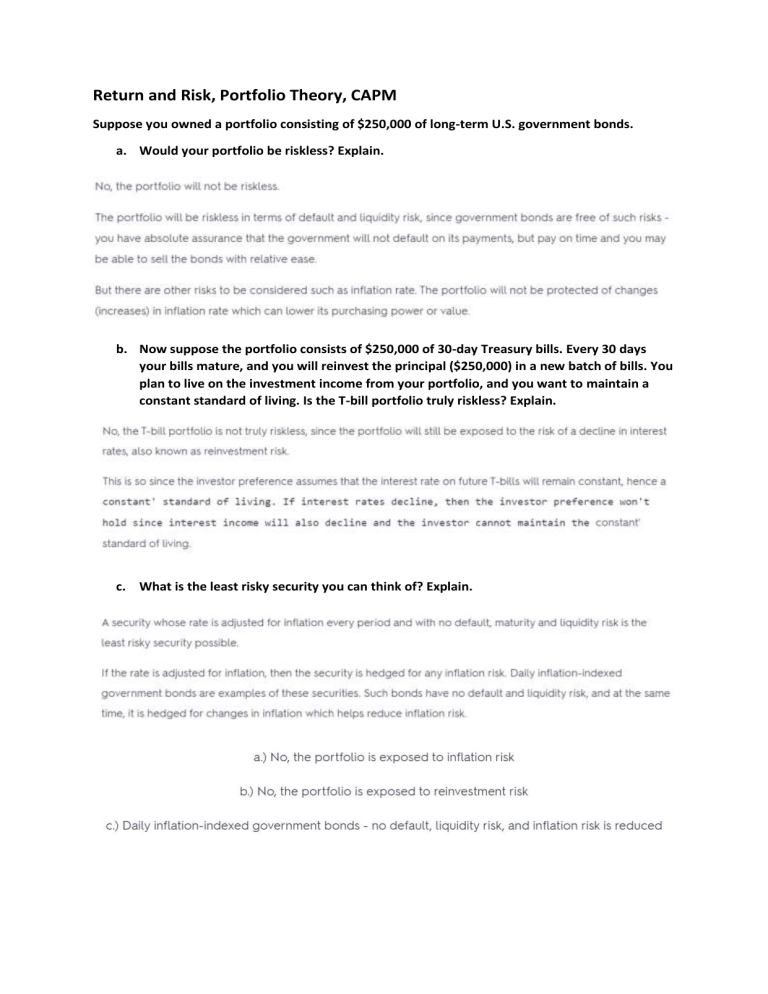Return, Risk, Portfolio Theory, CAPM Questions
advertisement

Return and Risk, Portfolio Theory, CAPM Suppose you owned a portfolio consisting of $250,000 of long-term U.S. government bonds. a. Would your portfolio be riskless? Explain. b. Now suppose the portfolio consists of $250,000 of 30-day Treasury bills. Every 30 days your bills mature, and you will reinvest the principal ($250,000) in a new batch of bills. You plan to live on the investment income from your portfolio, and you want to maintain a constant standard of living. Is the T-bill portfolio truly riskless? Explain. c. What is the least risky security you can think of? Explain. A life insurance policy is a financial asset, with the premiums paid representing the investment’s cost. a. How would you calculate the expected return on a 1-year life insurance policy? b. Suppose the owner of a life insurance policy has no other financial assets—the person’s only other asset is “human capital,” or earnings capacity. What is the correlation coefficient between the return on the insurance policy and the return on the human capital? Is it possible to construct a portfolio of real-world stocks that has a required return equal to the risk-free rate? Explain. Stock A has an expected return of 7%, a standard deviation of expected returns of 35%, a correlation coefficient with the market of 0.3, and a beta coefficient of 0.5. Stock B has an expected return of 12%, a standard deviation of returns of 10%, a 0.7 correlation with the market, and a beta coefficient of 1.0. Which security is riskier? Why? A stock had a 12% return last year, a year when the overall stock market declined. Does this mean that the stock has a negative beta and thus very little risk if held in a portfolio? Explain. If investors’ aversion to risk increased, would the risk premium on a high-beta stock increase by more or less than that on a low-beta stock? Explain. If a company's beta were to to double, would its required return also double? Bonds and Their Valuation



